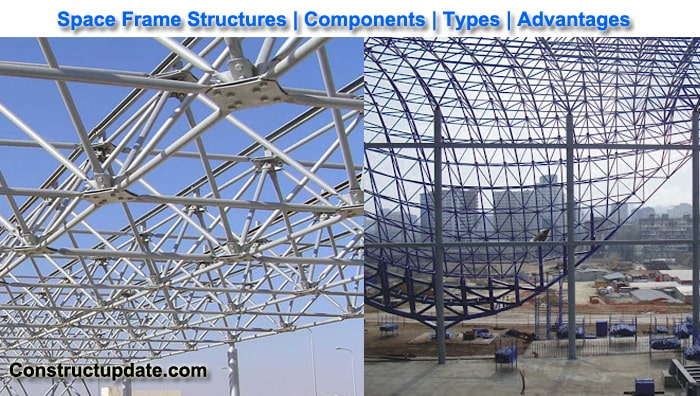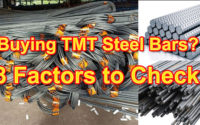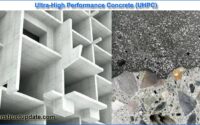What is Space Frame Structure | Types and Components of Space Frame
What Is Space Frame?
In architecture and structural engineering, a space frame is a way for covering long spans. This space frame is a robust, truss-style construction that is minimal in weight. The truss in the space frame is made up of geometrically interconnecting struts. For vast spans with limited internal supports, space frames are used.
Space frame constructions are designed using rigid matrices. The space frame structure is a three-dimensional framework made up of a variety of strut and linear parts. Which has been altered to transfer the strain that is being placed on it.
The angular element determines the stiffness matrix’s characteristic in an architectural space frame. The joints of the space frame construction can resist angular deformations if they are robust enough. It also makes space frame design calculations easier.
Components of Space Frame System:
A space frame is made up of several components that are used to build constructions. As crucial elements, linear action members and node connectors are included.
The space frame’s linear members are mostly circular and rectangular in shape. This includes pieces of tube or pipe. It’s a material that’s utilised to make space frames. Space node connectors make assembling the element a breeze.
The usage of node connectors to link members from joints to space frame construction is common. The nodal joints are responsible for transferring the structure’s total applied load.
The nodule-to-nodule connection is correctly built to be highly strong and inflexible. So that structural loads can be transferred. Prefabricated space frames in a variety of conventional sizes and shapes are available on the market.

Types of Space Frame Structure:
Plane Frame:
The plane frame is built in a level plane, with trusses or girders as examples of aircraft often employed for roof and beam construction.
For a long time, construction was subjected to light loading.
Structural Frame:
These structural frames allow for huge roof heights and are commonly utilised in oil and industrial structures.
Space Frame:
Space frames create a lightweight roof structure by having spans in opposite directions of a single spread.
A space frame is a sequence of linked pyramid frames that is a version of a plane frame.
Benefits of a Space Frame Structure:
The following are some of the benefits of a space frame structure:
- Structures made with space frames are low in weight.
- The rigidity of the space frame structure is adequate.
- Because of the prefabricated component sections, the space frame structures are very simple to assemble.
- Acoustically, space frame buildings are good.
- Purlins are not required.
- It is better suited to constructions with an uneven plan form and location.
- The duration to depth ratio of space frame constructions is outstanding.
- Transporting and handling space frame structures is a breeze.
- This structure provides a mid-column and avoids the need for geometric stability.
- At low altitudes, it produces a big spawn.
- This style of construction allows for excellent cambering.
- Also appropriate for a structure with a longer span.
- It gives an explicit term that is column-free.
- It gives the smallest amount of deflection.
- It has a low cost of transportation.
Space Frame Structure’s Drawbacks:
The following are some of the drawbacks of space frame structures:
When reinforced concrete is employed, the height of the space frame structure is limited to 40 feet.
Space frames that span in a three-dimensional plate structure based on the triangle’s stiffness and made up of linear elements are usually only subjected to axial tension or compression.
Despite the fact that certain connections are relatively rigid joints, the influence of bending or torsional moment is negligible.





